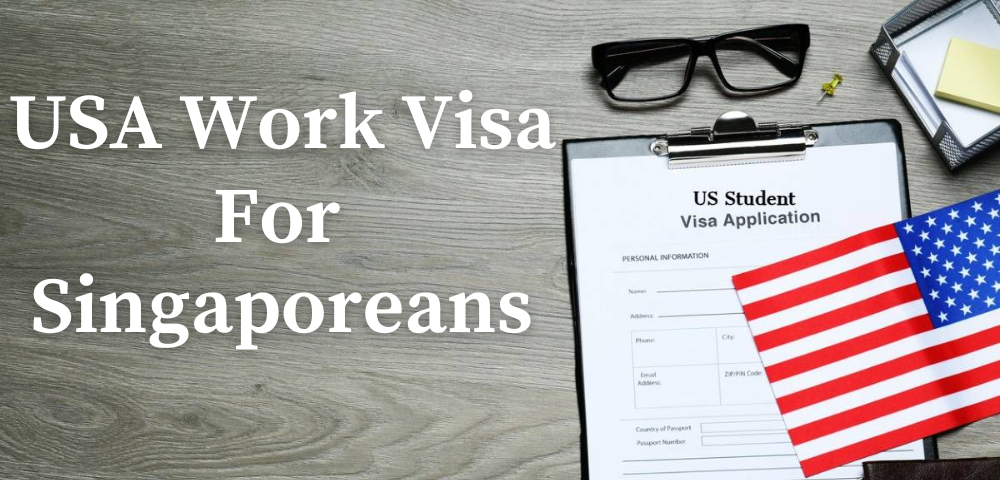
For many Singaporeans aspiring to advance their careers, the United States presents a land of opportunity. Understanding the visa requirements is essential in making this transition smooth. The most common visas Singaporeans apply for are the H-1B Visa and L-1 Visa, each with its unique criteria and application process. This guide aims to demystify these visa requirements, providing Singaporeans with a clear path to fulfilling their American dream.
While the H-1B Visa is highly sought after by professionals worldwide, including Singaporeans, it is subject to an annual cap and specific eligibility criteria. On the other hand, the L-1 Visa offers an alternative for intra-company transferees, allowing Singaporeans already employed in multinational companies to work in their U.S. offices. Securing a visa to USA from Singapore involves meticulous documentation and adherence to immigration protocols for a smooth travel authorization process. It's important to note that while this guide primarily focuses on Singaporeans, Australian Nationals have different visa options and requirements under the U.S.-Australia Free Trade Agreement, which will be briefly covered for comparative insights.
For Singaporeans aiming to work or study in the United States, understanding the specific visa requirements is crucial. The U.S. offers several visa types, each catering to different purposes, such as the H-1B visa for specialized employment and the L-1 visa for intracompany transfers. Singaporeans typically opt for the H-1B visa, which requires sponsorship from a U.S. employer and is subject to a cap and lottery system. The L-1 visa, on the other hand, suits those transferring within their company to a U.S. branch, demanding a different set of qualifications. While these general requirements apply to most applicants, Singaporean professionals have an added advantage under certain U.S.-Singapore trade agreements, which might ease some application processes. Additionally, Australian Nationals have distinct provisions under the U.S.-Australia Free Trade Agreement, offering them alternative pathways. It’s vital for Singaporeans to meticulously review these visa criteria and choose the one best aligned with their career objectives and qualifications.
The H-1B visa is a non-immigrant visa under the United States immigration law. It allows U.S. employers to temporarily employ foreign workers in specialty occupations that require theoretical or technical expertise. These occupations typically require specialized knowledge and a bachelor’s degree or higher in the specific specialty or its equivalent. This visa category is particularly relevant for professionals from Singapore seeking employment in industries such as IT, finance, engineering, and medicine in the U.S.
The L-1 Visa facilitates the transfer of a professional employee from an existing office in Singapore to an office in the United States within the same company. This visa is ideal for managers, executives (L-1A), or employees with specialized knowledge (L-1B).
The L-1 Visa is particularly advantageous for Singaporeans in multinational companies looking to develop their careers in the U.S. It allows for a potentially quicker and more streamlined process compared to the H-1B Visa, with no annual cap. However, the company’s qualifying relationship and the employee’s role are scrutinized closely to meet the stringent requirements.
Australian nationals seeking to work in the USA have a distinct advantage due to the U.S.-Australia Free Trade Agreement. Unlike Singaporeans, who primarily rely on the H-1B and L-1 visas, Australians are eligible for the E-3 visa. This visa is exclusively for Australian citizens and typically involves a simpler application process with a higher chance of approval compared to the H-1B visa. While Singaporeans must navigate the highly competitive H-1B visa program, which is subject to caps and a lottery system, Australian nationals can apply for the E-3 visa with a dedicated quota and less stringent competition.
For Singaporeans applying for the H-1B or L-1 Visa, the following steps and documentation are essential:
Obtain a job offer from a U.S. employer.
The employer must file an LCA with the U.S. Department of Labor for H-1B visas.
Complete the online visa application form (DS-160 for H-1B and DS-156 for L-1).
Prepare necessary documents, including a passport, resume, employment letters, and educational certificates.
Pay the applicable visa processing fees.
Schedule and attend a visa interview at the U.S. Embassy or Consulate.
Singaporeans face several obstacles when applying for U.S. work visas like the H-1B and L-1 Visas. A significant challenge is the competitive and capped nature of the H-1B Visa, which often sees a high volume of applicants, including Australian Nationals. To navigate this, Singaporeans should ensure their applications are thorough and submitted as early as possible. Another hurdle is meeting the stringent requirements set for these visas. For the H-1B Visa, this includes proving specialized knowledge or skill, whereas the L-1 Visa demands evidence of employment with a multinational company.
A key tip for success is meticulous preparation of documentation, demonstrating clear eligibility, and aligning with the specific visa requirements. Singaporeans should also stay informed about any policy changes affecting visa processing. Seeking advice from immigration experts can provide valuable insights, helping to streamline the application process and increase the chances of approval.
In summary, while the journey for Singaporeans to acquire U.S. work visas, particularly the H-1B and L-1 Visas, can be challenging, careful planning and understanding of the requirements can lead to successful outcomes. Staying abreast of policy changes and preparing a robust application are crucial. It's important for Singaporeans, and even Australian Nationals considering similar paths, to be aware of each step in the visa process. Ultimately, with the right approach and perseverance, Singaporeans can navigate the complexities of U.S. immigration to achieve their professional goals and make the most of the opportunities available in the United States. For expert assistance and to enhance your chances of success, connect with IVC Services today and take the next step towards your career in the U.S.